Analyzing Strategic Behavior in Business and Economics
Analyzing Strategic Behavior in Business and Economics
A Game Theory Primer
Thomas J. Webster
Lexington Books
Lanham Boulder New York Toronto Plymouth, UK
Published by Lexington Books
A wholly owned subsidiary of Rowman & Littlefield
4501 Forbes Boulevard, Suite 200, Lanham, Maryland 20706
www.rowman.com
10 Thornbury Road, Plymouth PL6 7PP, United Kingdom
Copyright 2014 by Lexington Books
All rights reserved . No part of this book may be reproduced in any form or by any electronic or mechanical means, including information storage and retrieval systems, without written permission from the publisher, except by a reviewer who may quote passages in a review.
British Library Cataloguing in Publication Information Available
Library of Congress Cataloging-in-Publication Data
Webster, Thomas J.
Analyzing strategic behavior in business and economics : a game theory primer / Thomas J. Webster.
pages cm
Includes bibliographical references and index.
ISBN 978-0-7391-8604-6 (cloth) ISBN 978-0-7391-8605-3 (electronic) 1. Game theory. 2. Decision making. 3. Management. I. Title.
HB144.W33 2014
658.4'033dc23
2013043736
 The paper used in this publication meets the minimum requirements of American National Standard for Information SciencesPermanence of Paper for Printed Library Materials, ANSI/NISO Z39.48-1992.
The paper used in this publication meets the minimum requirements of American National Standard for Information SciencesPermanence of Paper for Printed Library Materials, ANSI/NISO Z39.48-1992.
Printed in the United States of America

Preface
Standard optimization analysis involves finding the most efficient solution to well-defined objective function subject to one or more side constraints. A managers ability to maximize a firms value on behalf of shareholders, for example, may be hamstrung by an inability to raise finance capital, shortages of skilled labor, disruptions in the flow of critical raw materials, social or political unrest in overseas markets, capacity constraints, insufficient warehouse space, labor unrest, pollution emission standards, government regulation, proscriptions against certain types of business activities, antitrust legislation, and so on. Unfortunately, this approach to finding optimal solutions to managerial decision-making problems often ignores the competitive realities of the marketplace.
Business decisions are rarely made in a competitive vacuum. Consider, for example, the decision by senior management of a publicly-owned corporation to launch an advertising campaign in the expectation of increasing market share and profits. It commits substantial resources to the expectation of increasing sales, profit, and market share. But, what else should this company factor into its calculations? For one thing, its rivals in the marketplace will not stand idly by and watch their customer switch brand loyalties. They will respond aggressively to recapture, if not expand, their market shares of the market. This countermove may lead to even greater spending by all firms, but no appreciable change in existing market shares. In the end, the bottom lines of all firms may suffer. When the actions of a firm affect, and are affected by, the actions of rivals, it is important to ask whether a managerial decision takes you to a place that you want to be, or that you dont want to be.
Managers who are able to put themselves in the shoes of rivals are more likely to successfully achieve the firms objectives than those who do not. Managers must be able to distinguish between those situations in which conflict is the best course of action, and those in which the best result entails cooperation. The purpose of this text is to introduce students to the fundamentals of game theory, which is the formal study of strategic behavior. Game theory is not a cookbook of recipes on how to deal with every strategic situation. It is, however, a tool kit for analyzing situations involving move and countermove.
Prerequisites
Most of the economics presented in this book is at the introductory level. For this reason, this book assumes that the reader has taken a course in the principles of microeconomics. More advanced economics courses, such as managerial economics, industrial organization, and international trade are helpful, but by no means mandatory. Chapter 13, for example, explores the possible effects of export subsidies on intraindustry trade. The purpose of this chapter is not to educate the reader in the theories of international trade. Rather, it is meant to show how continuous strategies and best-response functions can enhance our understanding of commercial policy and international trade flows.
Although the presentations of most of the topics presented in this text are diagrammatic, it is not possible to explore some important game theoretic concepts without the use of basic mathematics and statistics. In part II, for example, simple differential calculus is used to identify players best-response functions. In parts III and IV, such basic statistical concepts as expected value, standard deviation, and conditional probabilities are used in games involving incomplete and imperfect information. On the brighter side, this book is axiomatic in nature and presentation. There are no formal proofs and formal training in real analysis and set theory is not required.
Organization
This book is organized according to the information available to decision makers and the order of play. Sections I and II of the book deal with static and dynamic games in which the players have complete information about the strategies and payoffs. Section III discusses static and dynamic games under conditions of incomplete information in which the payoffs from alternative strategy profiles are uncertain. Section IV examines dynamic games with imperfect information in which the players are uncertain about the prior moves of rivals.
Depending on the target audience and the curriculum, chapters 110, 16, and 18 constitute the core of an introductory course in game theory and require little or no formal training in mathematics or statistics. Chapters 1117 in section I expands the earlier analysis of static games with complete information by introducing the continuous strategies and best response functions. A rudimentary understanding of optimization analysis is required.
Sections III and IV build upon concepts presented earlier in the book. These sections relax the assumptions of complete and perfect information and explore some real-world applications of game theoretic concepts, such as incentive contracts and auctions. The material presented in these chapters requires a familiarity with such basic statistical concepts as risk and uncertainty, which are reviewed in chapter 19. Although somewhat more challenging, these topics can be mastered by most students with a small measure of patience and perseverance.
Note to the Instructor
An Instructors Manual, including answers to selected end-of-chapter exercises and test bank, and PowerPoint presentations is available free of charge to instructors who adopt this text. For more information, contact .
Chapter One

Introduction to Game Theory
Introduction
Many of us think of a game as a recreational activity involving two or more players, such as chess, gin rummy, football, or the computer game Call of Duty , which involves both winners and losers. In business, we often speak of the winning team as the company with best return on equity or largest market share. Unlike chess, however, success in business sometimes results from cooperation to achieve a mutually beneficial outcome.
Next page
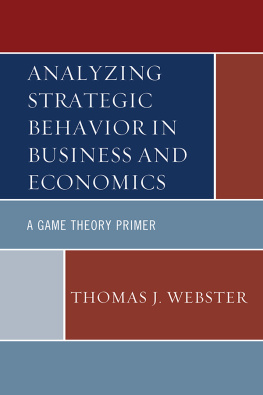







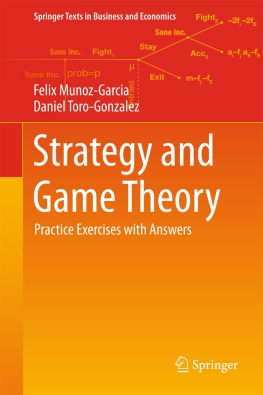
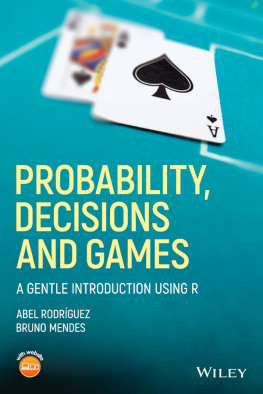
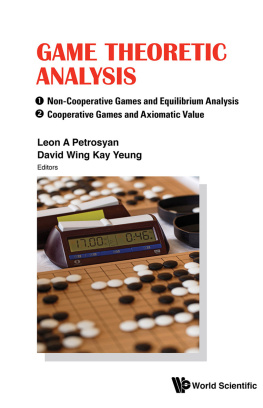
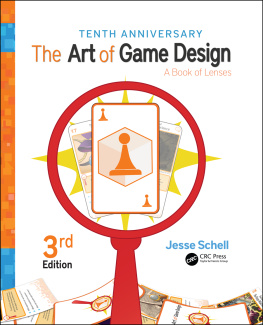

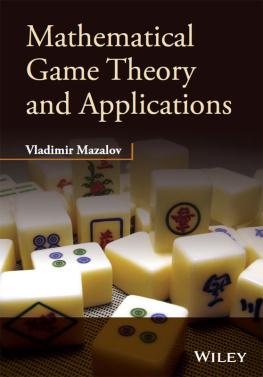
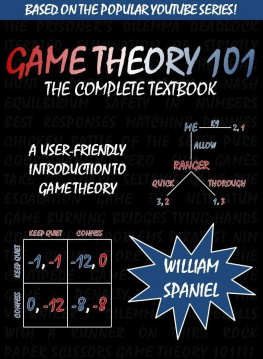
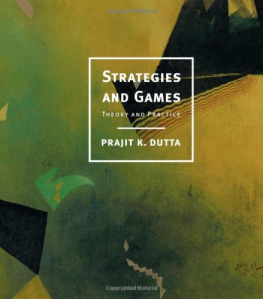
 The paper used in this publication meets the minimum requirements of American National Standard for Information SciencesPermanence of Paper for Printed Library Materials, ANSI/NISO Z39.48-1992.
The paper used in this publication meets the minimum requirements of American National Standard for Information SciencesPermanence of Paper for Printed Library Materials, ANSI/NISO Z39.48-1992.
